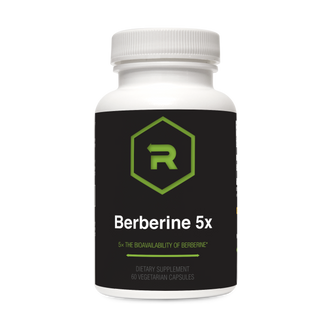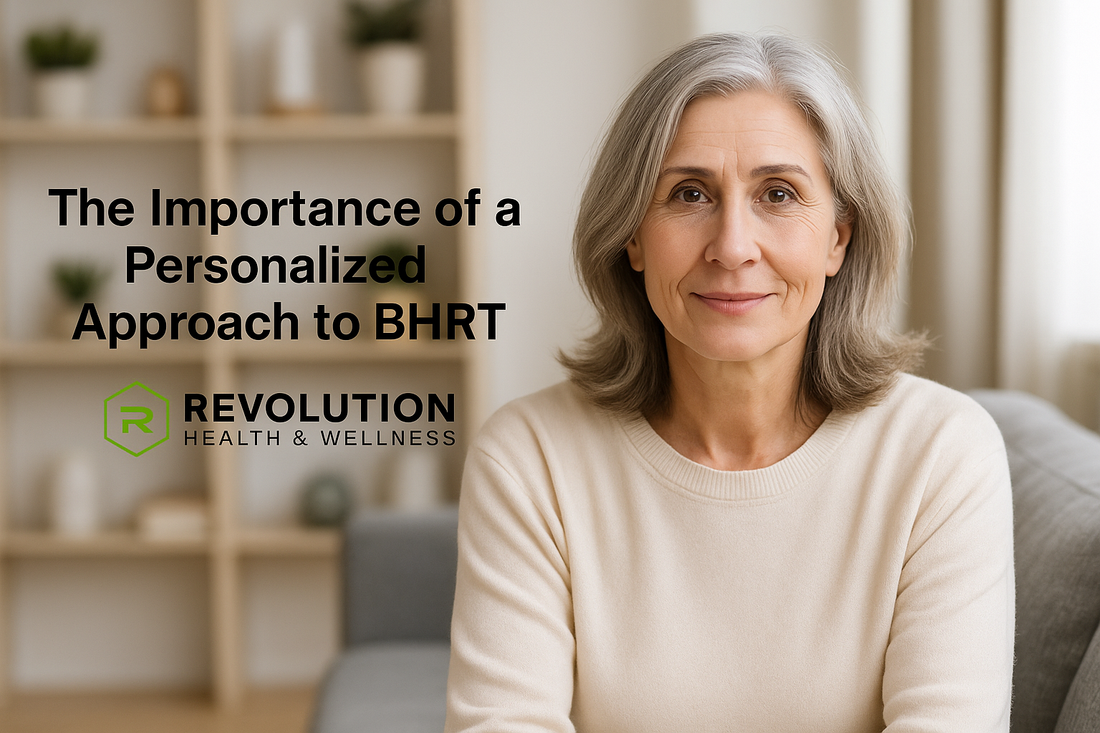The Importance of a Personalized Approach to BHRT
Bioidentical hormone replacement therapy (BHRT) has gained increasing attention as more women and men search for safe, effective, and natural solutions to hormone imbalance. Unlike synthetic hormone therapy, BHRT uses compounds structurally identical to the hormones produced by the human body. This similarity allows them to interact with receptors more naturally, often resulting in fewer side effects and more consistent results.
But while BHRT offers tremendous promise, there’s one crucial factor that makes the difference between success and frustration: personalization.
No two individuals have the same hormone profile, health history, or goals. A personalized approach ensures that therapy is not only effective but also safe, sustainable, and aligned with each patient’s unique needs. In this article, we’ll explore why personalization is essential in BHRT, what it looks like in practice, and how it supports long-term health.
Why Hormones Must Be Individualized
Hormones Are Not "One Size Fits All"
Hormones regulate nearly every system in the body—energy, mood, metabolism, sleep, sexual health, bone density, and more. Small differences in hormone levels can create very different outcomes. For example, two women experiencing menopause may both struggle with hot flashes, but one may also deal with insomnia and mood changes while the other experiences primarily vaginal dryness. Their BHRT needs will be very different.
Genetic Variability
Our bodies metabolize and respond to hormones differently. Genetic differences in liver enzymes, receptor sensitivity, and detoxification pathways mean that hormone therapy must be fine-tuned for each patient.
Health Conditions and Risk Factors
A patient with a family history of breast cancer, clotting disorders, or cardiovascular disease requires a different approach than someone without those risks. Personalization ensures therapies are designed with both effectiveness and safety in mind.
The Pitfalls of a Standardized BHRT Approach
Some providers or clinics may offer cookie-cutter BHRT programs, where every patient receives the same starting doses, delivery method, and monitoring schedule. This approach can lead to:
-
Over- or under-dosing: causing side effects like weight gain, acne, anxiety, or continued symptoms.
-
Poor symptom relief: failing to address individual complaints.
-
Increased risks: ignoring personal and family medical history can put patients at risk of complications.
-
Frustration and discontinuation: patients give up on BHRT, believing it “doesn’t work,” when in reality it just wasn’t customized.
Components of a Personalized BHRT Program
A truly individualized approach includes multiple steps:
1. Comprehensive Lab Testing
Lab testing is the foundation of personalization. Key markers may include:
-
Sex hormones: estradiol, progesterone, testosterone, DHEA
-
Thyroid function: TSH, free T3, free T4, reverse T3
-
Cortisol levels: to evaluate stress and adrenal function
-
Other health markers: lipids, liver function, vitamin D, and insulin sensitivity
These results help identify deficiencies, imbalances, and metabolic patterns.
2. Thorough Health History and Symptom Assessment
Personalization isn’t just about lab values. Providers must also evaluate:
-
Medical history and family history
-
Current medications and supplements
-
Lifestyle factors such as diet, exercise, sleep, and stress
-
Patient goals (relief of symptoms, longevity, prevention, or performance)
3. Customized Dosing
BHRT should always begin with the lowest effective dose. Some patients need more estrogen support, others more progesterone, and others a careful balance of both. Men may require small but steady testosterone support, while others may benefit from higher levels depending on metabolism and body composition.
4. Delivery Method
Personalized care considers not only what hormone is given but how it’s delivered. Options include:
-
Pellets: inserted under the skin, providing consistent release over months.
-
Creams and gels: applied topically, flexible and easily adjusted.
-
Capsules: oral dosing, though first-pass metabolism must be considered.
-
Injections: used more commonly for testosterone therapy.
Each delivery method has pros and cons depending on patient preference, absorption, and safety.
5. Ongoing Monitoring and Adjustments
Hormones are dynamic, and so is life. Stress, diet changes, aging, and health conditions all shift hormone needs over time. Personalized BHRT requires:
-
Repeat labs (typically every 3–6 months early on)
-
Symptom re-assessment
-
Dose adjustments as needed
-
Safety checks, including mammograms, prostate screening, and cardiovascular risk assessments
Benefits of a Personalized Approach
Improved Symptom Relief
Personalized BHRT ensures that therapy directly targets the patient’s most pressing concerns, whether it’s hot flashes, low libido, or fatigue.
Reduced Side Effects
Careful dosing prevents common side effects such as bloating, breast tenderness, or mood swings that occur with poorly tailored therapy.
Long-Term Health Protection
Balanced hormones help protect bone density, cardiovascular health, cognitive function, and quality of life. Personalization ensures these benefits are optimized while minimizing risks.
Empowered Patients
When patients see their therapy tailored to their unique profile, they feel more involved, understood, and empowered in their health journey.
The Role of Supplements and Lifestyle in Personalization
Personalized BHRT goes beyond hormones. It includes support for detoxification, metabolism, and overall health. Commonly recommended supplements include:
-
Hormone Balance (DIM): supports healthy estrogen metabolism.
-
Calcium D-Glucarate: aids detoxification of excess estrogens.
-
Omega 1300: reduces inflammation and supports cardiovascular health.
-
ActiveMulti: ensures micronutrient sufficiency.
-
B12 & Folate: supports methylation pathways, crucial for hormone metabolism.
Lifestyle interventions such as stress reduction, regular exercise, optimal nutrition, and quality sleep all enhance the effectiveness of BHRT.
Case Example: Personalized vs. Standardized BHRT
-
Standardized: A 52-year-old woman receives a generic prescription for estrogen cream. She continues to suffer from insomnia and anxiety because her progesterone deficiency was not addressed.
-
Personalized: With full lab testing, her provider discovers low progesterone and borderline thyroid function. She begins bioidentical estrogen and progesterone therapy, with thyroid support, plus Omega 1300 and DIM. Within months, her hot flashes, sleep, and mood improve significantly.
This comparison highlights why personalization is non-negotiable in hormone therapy.
The Risks of Ignoring Personalization
Without a personalized approach, patients risk:
-
Worsening symptoms from imbalanced dosing
-
Unnecessary exposure to high hormone levels
-
Missed underlying conditions (thyroid disorders, insulin resistance)
-
Increased risk of complications like clotting or cancer
Personalization ensures these risks are minimized while maximizing therapeutic benefits.
BHRT for Men and Women: Differences in Personalization
Women
-
Focus often on balancing estrogen and progesterone through perimenopause and menopause.
-
Testosterone may be used in smaller doses to support libido, energy, and muscle strength.
Men
-
Testosterone replacement is primary, but monitoring estradiol is equally important. Excess testosterone can convert into estrogen, leading to side effects like gynecomastia.
For both, personalization remains the cornerstone of success.
The Future of Personalized BHRT
Advances in precision medicine continue to enhance personalization in hormone therapy. Emerging tools include:
-
Genetic testing for metabolism pathways (CYP450 genes).
-
Advanced hormone panels using urine or saliva for circadian rhythm mapping.
-
Integration with peptide therapy for enhanced energy, metabolism, and recovery.
As research grows, the ability to tailor BHRT will only become more refined.
Key Takeaways
-
Bioidentical hormone therapy is most effective when tailored to individual needs.
-
Personalization includes comprehensive labs, health history, customized dosing, delivery method selection, and ongoing monitoring.
-
Supplements and lifestyle strategies enhance results and safety.
-
Standardized “one-size-fits-all” programs fall short and may increase risks.
-
Personalized BHRT supports symptom relief, safety, and long-term wellness for both men and women.
Call to Action
If you’re considering hormone therapy, don’t settle for a one-size-fits-all approach. At Revolution Health, we specialize in personalized BHRT programs designed to restore balance safely and effectively. Our comprehensive evaluations, advanced lab testing, and tailored treatment plans ensure your therapy is as unique as you are.
Take the first step toward balanced hormones and lasting vitality—schedule your consultation today.
References
-
Santen RJ, et al. Postmenopausal hormone therapy: an Endocrine Society scientific statement. J Clin Endocrinol Metab. 2010.
-
L’Hermite M. Bioidentical menopausal hormone therapy: registered hormones are optimal. Climacteric. 2017.
-
Stuenkel CA, et al. Treatment of symptoms of the menopause: Endocrine Society guideline. J Clin Endocrinol Metab. 2015.
-
Holtorf K. The bioidentical hormone debate. Postgrad Med. 2009.
-
Taylor HS, et al. Strategies to optimize personalized hormone therapy. Menopause. 2021.


